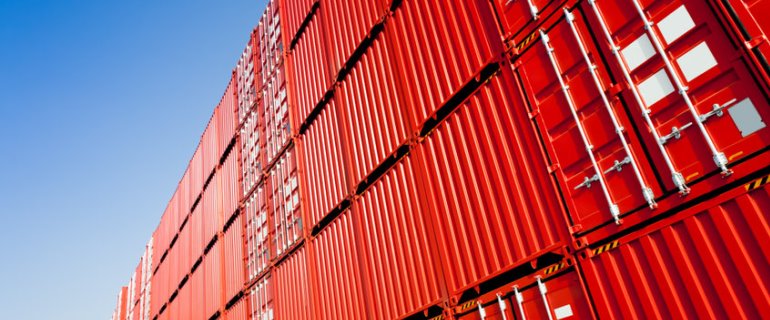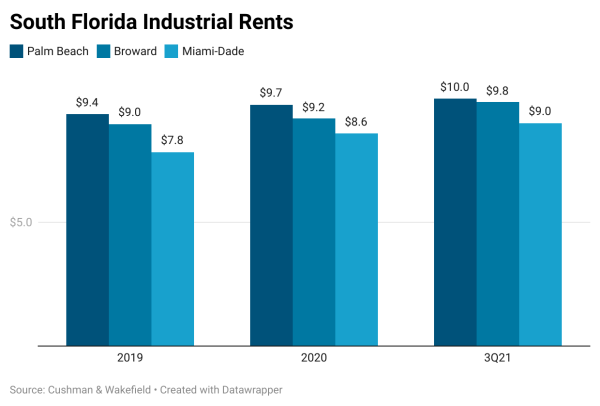It’s a good for a city to be called a “magnet,” so long as it’s attracting the right things.
In the case of Fort Lauderdale, business leaders just took heart after PwC, the national auditing and accounting firm, released an annual commercial real estate survey of 80 metro areas that for the first time ranks the city as a top “18-hour city.”
It’s a loosely defined term that refers to smaller cities with amenities, public services, and job opportunities that are comparable to those in larger places such as New York, Chicago and Los Angeles. But Fort Lauderdale is a place where it’s cheaper to live and do business, and where many entrepreneurs and investors find it easier to set up shop. Years ago, the city would button up and workers would go home at 5 p.m.
“Now you have more of an 18-hour city,” said Steve Hudson, president and CEO of Hudson Capital Group, a Fort Lauderdale-based real estate investment firm. “Young people are being attracted here — there are more jobs. People are catching on that this is very laid-back place to live that has a lot of benefits.”
Others cities the category include Charlotte, Denver, Minneapolis/St. Paul, Portland, Oregon, Salt Lake City and San Diego.
The PwC report also said Fort Lauderdale’s downtown is at the leading edge of the nation’s top 10 metropolitan areas that have workers returning to their offices from COVID -19. In addition, retail vacancy rates this year were 4.8%, the lowest in a decade and down from 8% in 2020.
All of it bodes well, according to real estate analysts and leaders of the Downtown Development Authority, for a local economy that is likely to continue a run to the upside in 2022.
The Migration Behind The Magnetism
Much of that optimism is based on a continued surge of population growth as thousands of people moved into South Florida from northern urban areas during the COVID-19 pandemic.
“You’re seeing a pretty strong migration of talent into this area, and the companies are paying attention,” said Ken Krasnow, vice chairman of Colliers Florida, the commercial real estate service firm.
Jenni Morejon, president and CEO of the DDA, said net migration into the city this year was 4,900 people, many of whom took up residence in new apartment towers that are sprouting in Flagler Village. Business leaders expect those numbers to grow in 2022 and 2023, and base their expectations in part on continued inquiries from out-of-town companies looking to expand.
“A rise in the number of downtown retail and restaurant operations is largely attributable to owners noticing a boost in the local population, and taking advantage of rents that are lower than elsewhere in South Florida,” Morejon said. “The downtown population has eclipsed 21,000. Many of the new restaurateurs that came to Fort Lauderdale have seen success in Miami and other places around the country and recognize rent is not as expensive as it is in Miami and West Palm beach. It’s really encouraging. New retailers are coming to downtown Fort Lauderdale. The movement has driven retail vacancy rates in the city’s core downward to 4.8% this year, which is lower than pre pandemic levels.”
Many of the newly arrived residents, Krasnow said, have the ability to work remotely from new homes in Fort Lauderdale while keeping their jobs in their original cities.
“People are free to effectively work or live wherever they want and increasingly they are choosing to live down there,” Krasnow said.
Aside from the well-documented flight from northern cities to the Sun Belt for tax and weather-related reasons, professionals in the legal, financial, technology and engineering fields are looking for more walkable neighborhood spaces and diversified cultural activities.
“The talent is choosing to live in places that have all of those dynamics,” Krasnow said. “We rate very well on all of those scales.”
Tim Petrillo, co-founder and CEO of The Restaurant People, operators of a dozen restaurants in the area, said the pandemic “put gas on the fire” of migration into the city, with many of the new residents being remote workers.
“I know we see all the time these people in the restaurants,” Petrillo said of the demographic. “Before, talent used to follow companies. Now we’re seeing companies following talent. Now companies are looking to establish a presence in our market. One challenge facing the city is that there has not been a lot of office space built in Fort Lauderdale. The 25-story The Main Las Olas which contains 1.4 million square feet of office, retail and residential space at 201 Las Olas, is the only new building with major office space to rise since the Bank of American tower a decade ago.”
Petrillo and Alan Hooper, through their Urban Street Development firm, are in a joint venture with Hines, the Houston-based office development giant, to add to the commercial mix with an expansive mixed-use project in the Flagler Village area, scene of multiple high-end apartment rentals towers.
A key proposed component is a Hines concept called Timber, Transit and Technology [T3], a seven-story structure aimed at attracting technology and financial service firms. The developers expect to complete the project in 2024.
Developers Jockey For Position
The influx of new residents and ensuing demand for places to live hasn’t been lost on developers, who seem to be working overtime at their drawing boards.
“We see that a lot,” said Stephen Chang, chief operating officer of Suffolk Construction of West Palm Beach, which is involved in a variety of commercial projects regionwide. “There is a definite boom going on right now for South Florida,” he said. “You have a lot of out-of-town developers very interested in South Florida because of the climate and its business acumen and how the government has kept the doors open. Financially it’s relatively cheap, when you compare to older cities like New York or Chicago.”
Areas Poised For Prominence
Fort Lauderdale has some areas that developers seem particularly keen on, based on their existing amenities, Brightline among them. For example, the Kushner Companies of New York and Aimco of Denver have proposed a joint venture to build a 540-foot mixed use project at 300 West Broward Boulevard, slightly to the west of Brightllne’s downtown train station. It would be comprised of two 38-floor towers atop a 10-floor podium, with 956 residential units and 23,752 square feet of ground level commercial space, according to the companies’ development application with the city.
The effort would result in the tallest structure in the city, reaching higher than the 499-foot 100 Las Olas building tower and serve, the developers say, as “an urban gateway to the heart of downtown Fort Lauderdale.”
The proposed building follows an earlier proposal Kushner submitted this year for four other high rises called “Broward Crossing,” also near the Brightline station.
Both companies declined to comment. But their application echoed what local analysts say about why developers want to build here: to leverage nearby existing civic and cultural amenities and build momentum toward more growth — and profits.
“The site is located at an important junction between major transportation hubs, civic and cultural institutions, and commercial attractions,” the application says.
It goes on to note the nearby Brightline and the Broward Central Bus Terminal, the civic and cultural landmarks including the future Joint Governmental Campus, the Museum of Discovery and Science, the Broward Center for the Performing Arts, and Esplanade Park.
“The proposed building is an opportunity to create not only an icon for the city, but also a new community space that contributes to the life of the neighborhood and enhances the pedestrian connections from around the city,” the application adds.
The companies also think the project would inspire further development westward along Broward Boulevard.
“The hope is to add new energy to the neighborhood, supporting the local economy and the lives of those throughout the local community,” the application says.
Source: SunSentinel




